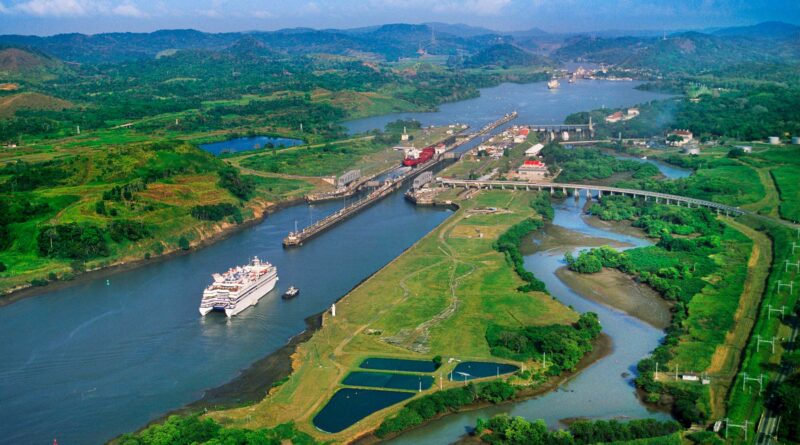Drying Out
How Dry Weather and Bad Planning Led to a Backlog at the Panama Canal
By Spencer A. Backman, Global News Editor
The Panama Canal handles roughly five percent of global seaborne trade, however, due to drought conditions and bad planning, the line is getting longer by the day.
The Panama Canal handles five percent of all seaborne trade. Panama sits in the middle of central America and hosts the only route between the pacific and Atlantic oceans that doesn’t require traversing the northern passage or Cape Horn around the American continents. However, years of mismanagement, poor planning, and climate change have made it less of a shortcut than a waitlist.
There are three ways to get between the Pacific and Atlantic oceans in the Western Hemisphere, first, go north through the Northwest Passage near the Artic in the few months of year that’s possible. Second, go south around the tip of South America through Cape Horn where the swells and storms are some of the most dangerous on earth. Third and ideally, go through the Panama Canal.
There are a lot of benefits to doing so, less danger, less time, less fuel.
The Panama Canal was built in 1914, when global shipping was far less than it is today. It was built across a mountainous section of Central America in Panama, that is shortest distance between the Atlantic and Pacific.
The Canal was built with a series of locks or set sections that could be drained or flooded to raise a ship up to go over a mountain or down to go back into the ocean. These locks were to be fed with fresh water from a man-made lake on the top of the mountain. The water flow was expected to be continuous, unlimited, and naturally flowing with gravity and heavy tropical rainfall.
In 1914, the system was successful. Fast forward to 2024 when global shipping is far busier than could have been imagined then. The ships are orders of magnitude bigger and require more water in the locks to float. Now the predictble rain in the Panamanian tropics is anything but reliable with climate change.
All these changes in the world required changes to the canal, a larger lake, locks for bigger ships, back up sources of water.
Bureaucracy, money, time, and disagreement played a hand, but mother nature had the final say. In 2022, 2023 and 2024 the lake feeding the Panama Canal has been dying out. Less water is flowing in via its rivers as a drought fueled by El Niño has plagued the region.
The biggest traffic jam on earth ensued and it’s getting bigger every day. Produce rots in ships’ holds, key parts and pieces wait at anchor, and those who can pay keep sailing through. Panama instituted a sort of fast pass for those who can pay a higher rate which mostly benefits high paying petroleum product shippers.
Recently, the lake has been refilled with drainage from the canal, however, that water is mixed with seawater, the salt from which can severely damage the canal mechanics in the long term.
The only viable solutions seem to be either adding more water to the existing lake or building a new one. The only place to build a new lake is a small, inhabited agricultural valley whose residents are strongly opposed to relocation.
Consensus on the solve is far off, but the leaders acknowledge that a long-term solution is needed and are actively looking to modernize the Panama Canal to address the challenges of climate change.







